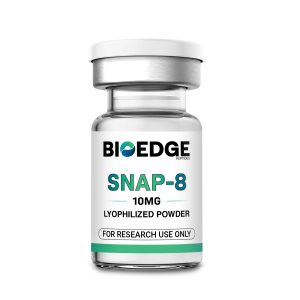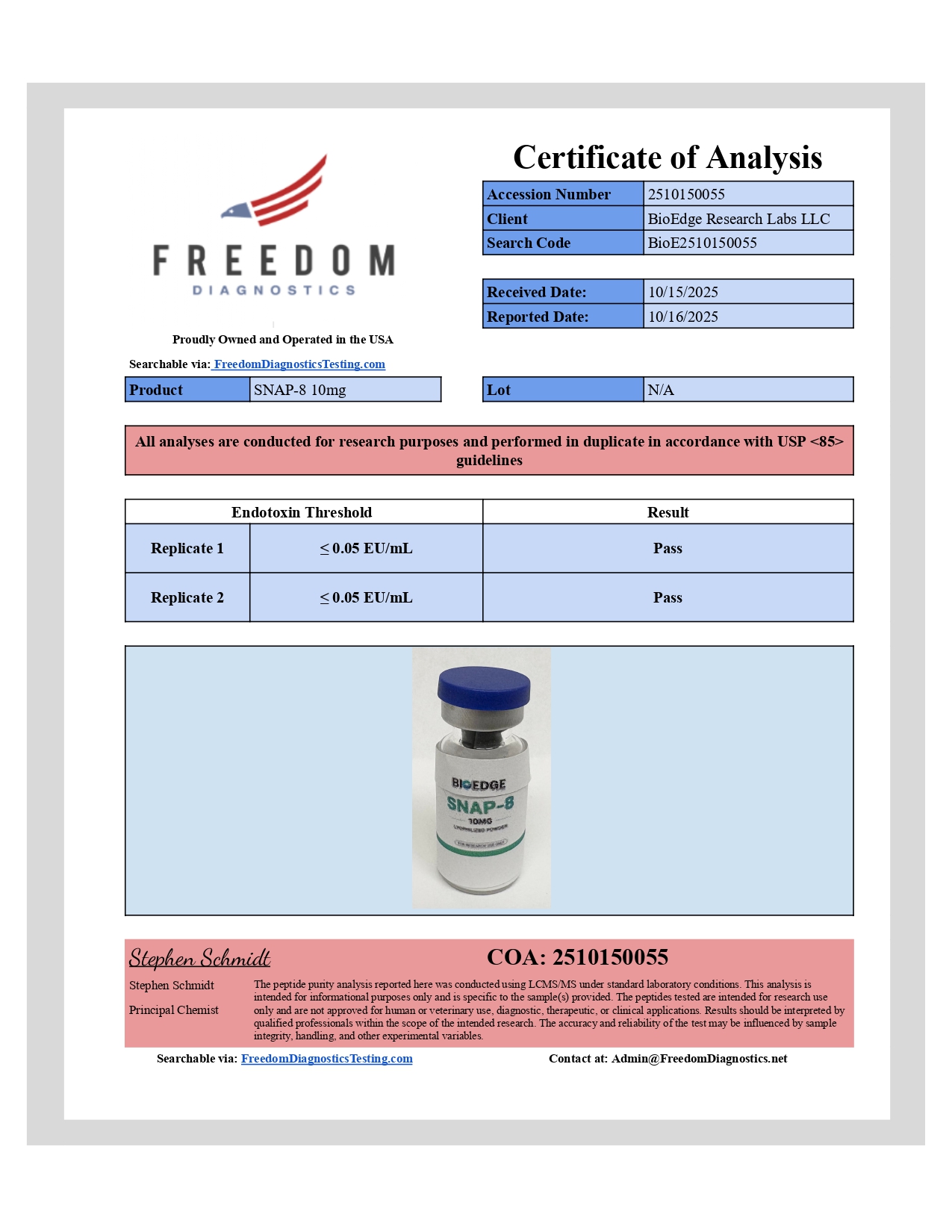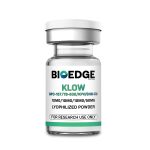

SNAP-8 (10MG)
$55.00 Original price was: $55.00.$49.00Current price is: $49.00.
Contents: Lyophilized Powder in 3ml vial
Requires reconstitution with bacteriostatic water
Rigorous Third-Party Testing
Every batch of our research chemicals and peptides undergoes third-party testing.
- Description
- 3rd Party Lab Testing
Description
What is SNAP-8?
SNAP-8 is a synthetic research peptide derived from Acetyl Glutamyl Heptapeptide-3, designed as an optimized fragment of the SNAP-25 protein involved in facial muscle contraction. It has been widely studied for its potential to reduce the appearance of wrinkles and fine lines in vitro by modulating neurotransmitter release at the neuromuscular junction.
Preclinical and cosmetic research models suggest that SNAP-8 may function as a competitive inhibitor of SNARE complex formation, a key process responsible for vesicle fusion and muscle contraction. Because of this, SNAP-8 is frequently compared to botulinum-like mechanisms at the molecular level—though it acts through a non-toxic, peptide-based pathway.
SNAP-8 is primarily used in cell culture, dermatological, and cosmetic biochemistry research to explore neuromodulation, skin elasticity, and peptide-based relaxation mechanisms.
SNAP-8 Product Specifications
| Specification | Details |
|---|---|
| Product | SNAP-8 (Acetyl Glutamyl Heptapeptide-3) |
| Format | 10 mg Vial |
| Purity | >99% (HPLC Verified) |
| Form | White Lyophilized Powder |
| Solubility | Soluble in sterile water |
| Storage Conditions | Store in a cool, dry place; refrigerate after reconstitution |
| Stability | 24 months when properly stored |
Why Choose BioEdge Research Labs SNAP-8?
-
Research Grade Purity: Verified >99% by third-party HPLC testing
-
Secure Packaging: Designed to maintain peptide stability and prevent degradation during shipment and storage
-
Rapid Fulfillment: Most orders ship within 24 hours of payment confirmation from our U.S. facility
-
Researcher Support: Dedicated service for licensed research professionals
Summary of Preclinical Research Findings
Neuromodulation and SNARE Complex Inhibition
SNAP-8 has been shown in vitro to interfere with the SNARE complex formation between SNAP-25 and syntaxin, reducing neurotransmitter release and limiting repetitive muscle contraction. This mechanism has made it a focus of research exploring peptide-based relaxation and wrinkle modulation without neurotoxicity.
Peptide-Based Facial Relaxation Models
Comparative studies have examined SNAP-8 alongside other peptides that mimic botulinum-like effects. Data suggest that SNAP-8 may provide a dose-dependent inhibitory effect on catecholamine release, offering a controlled model for neuromodulatory peptide investigation.
Skin Elasticity and Smoothness
Research has explored SNAP-8’s potential to improve skin texture and elasticity in reconstructed tissue models by reducing contraction intensity and maintaining collagen matrix integrity. These findings have made it a valuable reference peptide in cosmetic and dermal biochemistry research.
Suggested Areas of Research
-
Neuromodulation and neurotransmitter regulation
-
SNARE complex inhibition and vesicle fusion studies
-
Skin elasticity and tissue remodeling models
-
Peptide-based anti-aging compound research
-
Non-toxic alternatives to neurotoxin-based muscle relaxation
Handling & Storage Guidelines
-
Store lyophilized peptide in a cool, dry place
-
Refrigerate after reconstitution
-
Use only sterile, laboratory-grade solvents
-
Protect from heat, moisture, and light
For Research Use Only
SNAP-8 is supplied by BioEdge Research Labs exclusively for laboratory testing and in vitro research.
-
Not for human or animal use
-
Not for medical or diagnostic purposes
-
Purchase confirms that the buyer is a qualified researcher, 18 years or older
-
All usage must comply with local laws and lab safety guidelines
Summary of References
SNAP-8 Analytical Methods and Quantification
- Gao, Y., Chen, Q., Sun, X., et al. (2020). Development of an LC–MS/MS MRM assay for the quantification of Acetyl Octapeptide-3 (SNAP-8) in cosmetic formulations and microneedle patches. Microchemical Journal, 158, 105238. https://link.springer.com/content/pdf/10.1186/s40543-020-00232-8.pdf
SNAP-8 Mechanism of Action and SNARE Complex Inhibition
- Ponsati, B., Blanes-Mira, C., et al. (2000). Modulation of SNARE complex formation by peptides derived from SNAP-25. European Journal of Biochemistry, 267(22), 6339–6346. https://febs.onlinelibrary.wiley.com/doi/pdfdirect/10.1046/j.1432-1327.2000.01212.x
- Blanes-Mira, C., et al. (2005). A synthetic peptide SNAP-8 mimics the N-terminal end of SNAP-25 to competitively inhibit SNARE complex formation. Journal of Cosmetic Science, 56(6), 421–429. https://pubmed.ncbi.nlm.nih.gov/16579557
SNAP Family Proteins in Cellular Fusion Mechanisms
- Kloepper, T.H., et al. (2008). Identification and functional characterization of a SNAP-25 homolog in Paramecium revealing evolutionary conservation of SNARE-mediated exocytosis. Eukaryotic Cell, 7(8), 1365–1376. https://journals.asm.org/doi/abs/10.1128/ec.00012-08
SNAP-8 and Peptide-Based Anti-Wrinkle Research Reviews
- Zhou, J., et al. (2020). Peptides in cosmetics: an insight into anti-aging and skin barrier applications. Frontiers in Chemistry, 8, 572923. https://www.frontiersin.org/journals/chemistry/articles/10.3389/fchem.2020.572923/full
- Miteva, M., et al. (2023). Bioactive peptides in dermatocosmetics – mechanisms, stability, and delivery systems. Journal of the Medical University of Varna, 11(2), 177–186. https://journals.mu-varna.bg/index.php/jmk/article/view/8186








